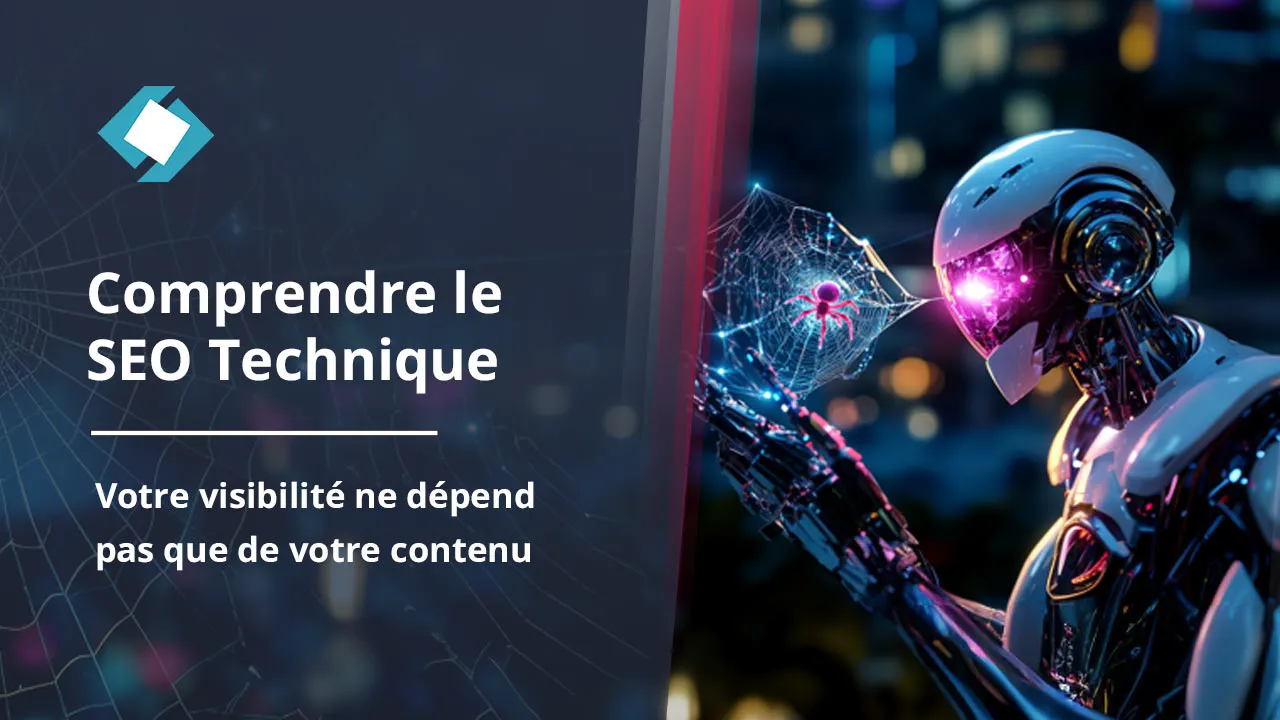If you’re reading this, you’re probably sick of watching your website stagnate in Google’s depths while competitors dominate the first page. The problem? You can have the world’s best content, but if your technical foundations are broken, you’re going nowhere.
Technical SEO is like your house’s foundation: invisible, but absolutely critical. Without it, even the most beautiful design won’t save you from collapse.
In the next 8 minutes, you’ll discover why 73% of websites lose rankings due to preventable technical errors, and more importantly how to transform your site into a Google bot magnet.
Spoiler alert: Some optimizations can boost your traffic by +47% in under 3 months.
Why Technical SEO Will Make or Break Your Visibility
Let me explain a truth that 90% of website owners ignore: Google consumes more electricity than Iceland. The equivalent of TWO nuclear power plants per year, just to crawl and index the web.
Result? Mountain View’s giant does everything to save on crawling costs. Translation: if your site looks like a broken maze with 404 errors everywhere, Google will quickly look elsewhere.
The Harsh Reality of Crawl Budget
Here’s what actually happens on Google’s servers:
Your site has 3 seconds to impress the bots. Beyond that, they leave to explore a more welcoming competitor. Yes, it’s exactly like a Tinder date, but with business stakes.
Concretely, if Google visits 1,000 pages on your site and encounters:
- 300 404 errors
- 200 pages taking 8 seconds to load
- 150 duplicate content pieces
It will simply reduce the frequency of its visits. Less crawling = less indexing = less visibility = less traffic.
But here’s where it gets interesting: with the right technical optimizations, you can flip this logic in your favor and become Google bots’ favorite.

The 3 Pillars That Determine Your Success
PILLAR 1: Smooth Exploration Your pages must be discoverable and accessible effortlessly. Clean XML sitemap, logical architecture, zero broken links.
PILLAR 2: Optimized Indexing Google must instantly understand what each page is about. Perfect title tags, compelling meta descriptions, flawless H1-H6 structure.
PILLAR 3: Technical User Experience Lightning-fast loading speed, perfect responsive design, green Core Web Vitals.
Master these 3 pillars, and you’ll gain a massive competitive advantage. Neglect them, and you’re handing your rankings to competitors on a silver platter.
Crawling and Indexing: How to Seduce Google Bots
Imagine you’re hosting a party and want to impress your guests. What do you do? You clean, organize, prepare a plan so they can easily find what they’re looking for.
Well, it’s the same with Google bots! These digital creatures love order, cleanliness, and clarity. Give them what they want, and they’ll return the favor tenfold.
The robots.txt File: Your Digital Bouncer
The robots.txt is your nightclub bouncer. It tells bots: “You enter, you don’t enter, and you… wait outside.”
But careful, use it sparingly! I see too many sites self-sabotaging by blocking important sections. My golden rule? If a page shouldn’t be indexed, use JavaScript-obfuscated links rather than robots.txt.
Why? Because a link to a “forbidden” page creates bot “teleportation” off your site. And that’s exactly the opposite of what we want!
XML Sitemap: Your Treasure Map
Your XML sitemap is like giving Google bots a premium GPS. But don’t count on it to fix poor internal linking!
The sitemap mainly serves to:
- Quickly notify about new pages
- Re-trigger crawling on “orphaned” pages
- Give hints about relative content priority
Pro tip: Update your sitemap automatically. An obsolete sitemap is worse than a GPS sending you to a dead end.
Site Architecture: The Art of Intuitive Navigation
Good architecture is like a well-designed subway map: everyone understands where to go, even at 6am with three coffees in their system.
3-click maximum rule: Any page on your site must be accessible within 3 clicks from the homepage. Beyond that, you lose visitors AND bots.
And if you want to go high-level, look into Laurent Bourrelly’s semantic cocoon. It’s competition-level internal linking that can work miracles on your rankings.
Architecture and Performance: The Winning Formula
Let’s talk straight: a slow site is a dead site. In 2025, with user attention spans shorter than a TikTok video, every millisecond counts.
Speed: Your Secret Weapon Against Competition
Shocking data: one extra second of delay = -11% page views, -16% customer satisfaction, -7% conversions. For an e-commerce making $100k/month, that’s $7,000 flying away due to a slow site!
But here’s the twist: while your competitors struggle with WordPress and its chatty plugins, you can take a massive head start.
Mobile Optimization: Mobile-First Indexing Isn’t Optional
Google has indexed MOBILE-FIRST since 2019. Translation? If your mobile version sucks, your desktop version can be perfect, you’ll still be penalized.
Killer mobile checklist:
- Fluid responsive design (no horizontal scrolling)
- Clickable buttons minimum 44px
- Mobile loading time < 3 seconds
- Thumb-friendly navigation
And little secret: 85% of my visitors are on desktop, but the ratio can be radically different depending on your niche. Check your analytics before optimizing!

Core Web Vitals: The Metrics That Make the Difference
Core Web Vitals are your site’s technical dashboard. 3 metrics that can make or break your SEO:
LCP (Largest Contentful Paint): Time to display main content. Target < 2.5 seconds.
FID (First Input Delay): Interaction responsiveness. Target < 100ms.
CLS (Cumulative Layout Shift): Visual stability. Target < 0.1.
How to improve them quickly?
- Optimize images (WebP, compression, lazy loading)
- Enable aggressive caching
- Minify CSS/JS
- Use a performant CDN
This is where frameworks like Astro make a real difference. I abandoned WordPress for this: native performance vs forced optimization.
Content and Structure: The Art of Converting Tags
Now that we’ve laid the technical foundations, let’s talk content. But careful, I won’t bore you with “content is king” and other clichés.
No, we’ll talk about invisible elements that make your content FOUND and UNDERSTOOD by Google.
Title Tags: Your Business Card in SERPs
The title tag is your elevator pitch in 60 characters max. Every word counts, every character matters.
Formula that works:
[Main keyword] : [Benefit/promise] + [Unique angle]
Killer example: ❌ “Technical SEO” ✅ “Technical SEO: The ULTIMATE Guide to Rock-Solid Foundations”
Why it works? Keyword + strong promise + curiosity = optimized click-through rate.
Meta Descriptions: Your Sales Pitch in 155 Characters
Meta description doesn’t directly influence ranking, but it can double your click-through rate. And better CTR = positive signal for Google = improved positions.
My secret technique: integrate a question or shocking stat in your meta descriptions. Humans can’t resist clicking.
Hn Structure: The Hierarchy That Guides Bots
Golden rule: ONE H1 per page, with your main keyword. Then H2 > H3 > H4 logically.
Fatal error I see everywhere: skipping title levels. Going from H2 to H4 directly is like skipping steps in a staircase: it confuses everyone.
Technical Errors That Sabotage Your SEO
Alright, let’s get to the meat! Here are the beginner (and sometimes expert) errors that can destroy months of SEO work.
Duplicate Content: The Silent Enemy
Classic scenario: you have an e-commerce site with pagination and filters. Result? 47 versions of the same product page with different URLs.
Google hates this. Solution? Strategic canonical tags to indicate THE reference version.
404 and 500 Errors: When Your Site Plays Hide and Seek
Imagine: you have a date with someone who always stands you up. How many times before you stop trying?
For Google, it’s the same. Too many 404/500 errors = less crawling = less visibility.
My method: monthly audit with Screaming Frog (yes, it costs €170/year, but it’s absolutely essential). 30 seconds of crawling can save you months of trouble.
Broken URLs: The Detail That Makes the Difference
URLs to avoid:
mysite.com/page.php?id=12345&cat=456&filter=abc
URLs that rock:
mysite.com/technical-seo-complete-guide
The difference? Clarity, keywords, memorability. And above all, it facilitates sharing and improves user experience.

Essential Tools: Your Technical Arsenal
Let’s stop playing cowboys and equip ourselves properly! Here are the tools that will transform your technical SEO approach.
Screaming Frog: The Swiss Army Knife of Auditing
If I could keep only ONE tool, it would be this one. €170/year that can save you thousands in avoided errors.
Screaming Frog crawls your site and outputs EVERYTHING:
- Missing or duplicate tags
- Redirect errors
- Images without alt text
- Orphaned pages
- Response times
- And much more…
Anecdote: I once audited sites with 30% of pages in 404 due to ONE typo in a template. 30 seconds to detect, 30 seconds to fix.
Google Search Console: Your Free Dashboard
Search Console is like having a spy at Google reporting everything:
- Indexed vs discovered pages
- Real-time crawl errors
- Keyword performance
- Core Web Vitals per page
Pro tip: Check the “Coverage” tab weekly. That’s where Google tells you if it has problems with your site.
SEOlyzer: For Large Sites (Log Analysis)
If you have thousands of pages, server log analysis becomes essential. SEOlyzer lets you see exactly how Google explores your site.
You’ll discover mind-blowing stuff:
- Google crawling useless pages for hours
- Important sections completely ignored
- Crawl patterns revealing architecture problems
It’s expert level, but the competitive advantage is enormous.
The Future of Technical SEO in 2025
And now, let’s talk about what’s coming! Because contrary to what we hear everywhere, technical SEO won’t disappear with AI.
Impact of Google Updates
2025 trend: Google releases increasingly frequent algorithm updates. Sites with solid technical foundations better resist fluctuations.
Recent data: 22.2% of SEO professionals cite algorithm updates as their main challenge (vs 8.6% in 2023).
My strategy? Focus on fundamentals rather than chasing every trendy tactic.
Core Web Vitals and User Experience
New metrics are coming: Google is already testing new user experience indicators. Interaction speed, scroll stability, tactile response time…
The message is clear: user experience becomes the dominant ranking factor.
AI and Technical SEO: Complementary, Not Competitors
Contrary to popular belief, AI reinforces the importance of technical SEO:
- ChatGPT and Perplexity crawl and index the web like Google
- They favor fast and well-structured sites
- Structured data becomes critical for feeding AIs
Result? Technically optimized sites gain visibility across ALL search channels.
Your Action Plan for Concrete Foundations
Quick recap: you now know why technical SEO can skyrocket your visibility (or destroy it). Question: will you stay in procrastination or take action?
Here’s your roadmap for the next 30 days:
WEEK 1: Complete audit with Screaming Frog + Search Console verification WEEK 2: Fix critical errors (404, speed, mobile) WEEK 3: Tag and structure optimization WEEK 4: Monitoring and tracking setup
The truth? While 90% of your competitors focus only on content, you can take a considerable lead by mastering technical aspects.
Stop suffering from Google fluctuations and take control of your visibility!
Your site deserves better than wobbly architecture and snail performance. Technical SEO isn’t sexy, but it’s what separates winners from losers in the visibility battle.
So, ready to transform your site into a ranking war machine?






